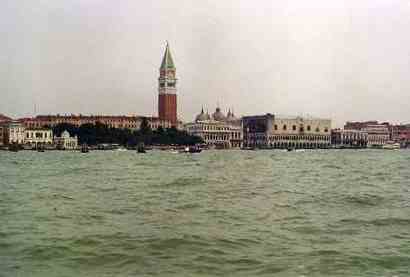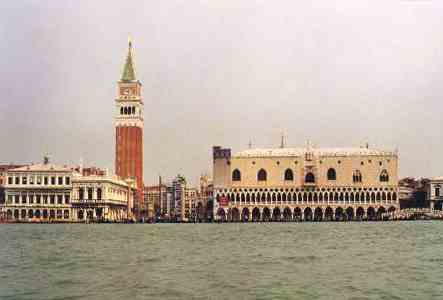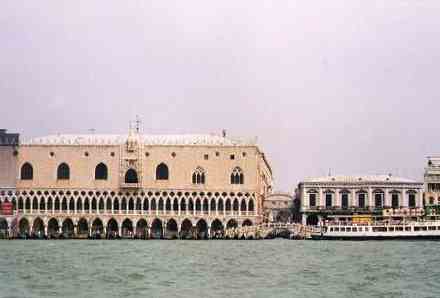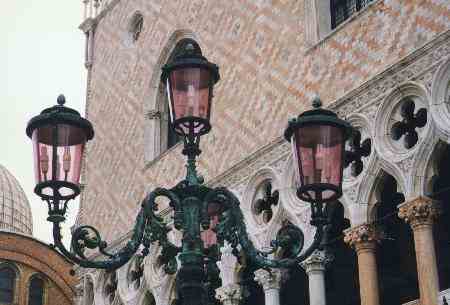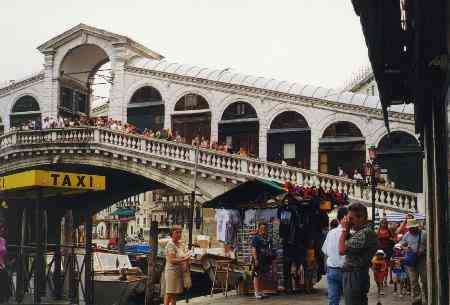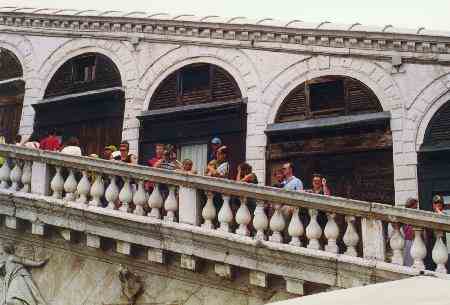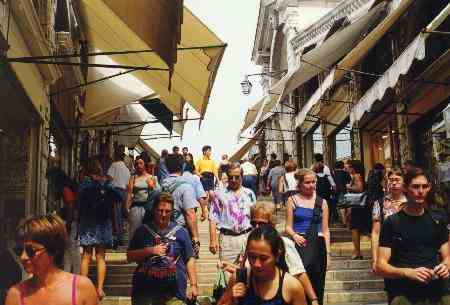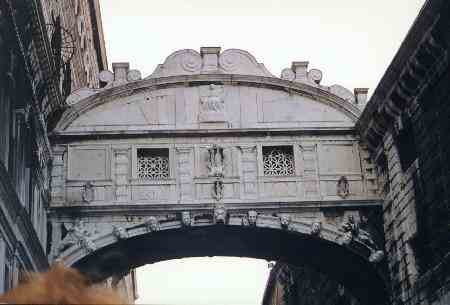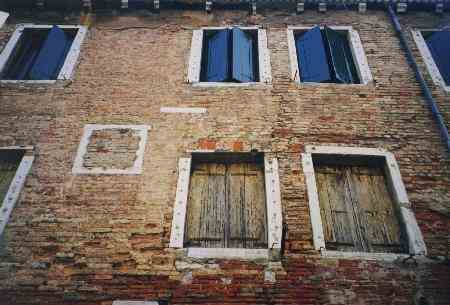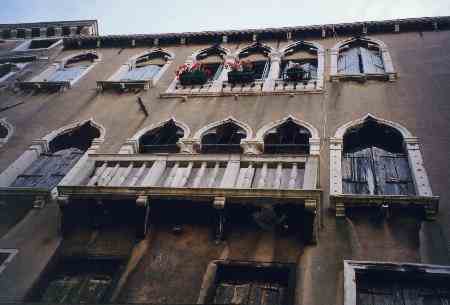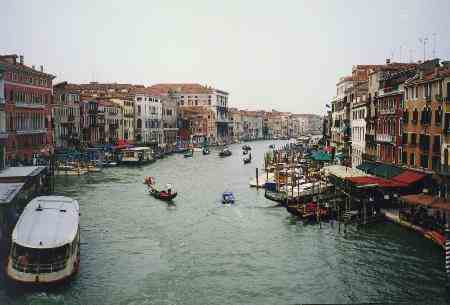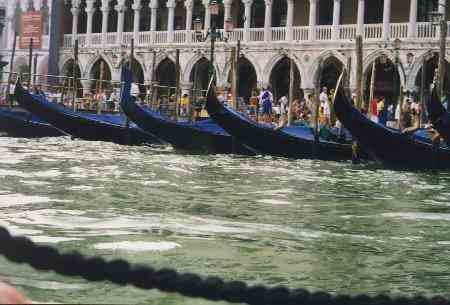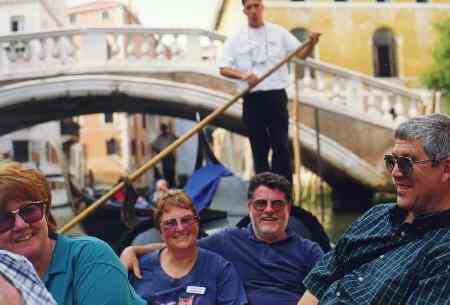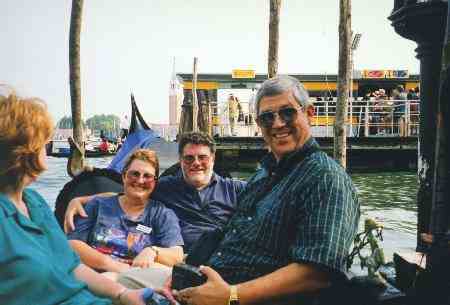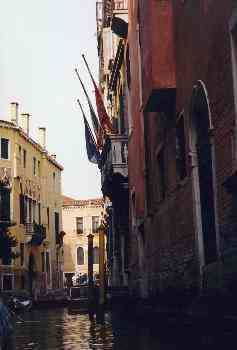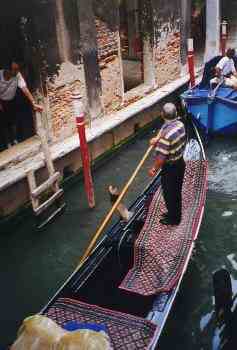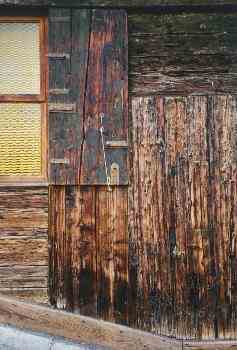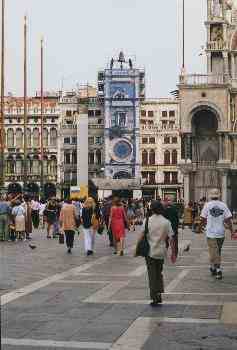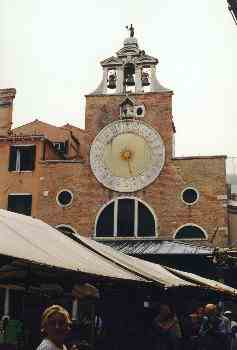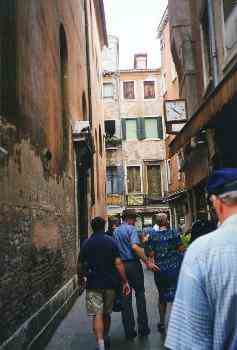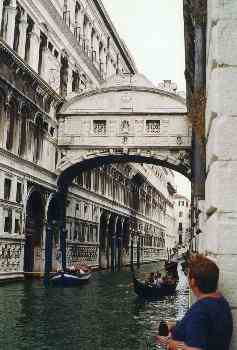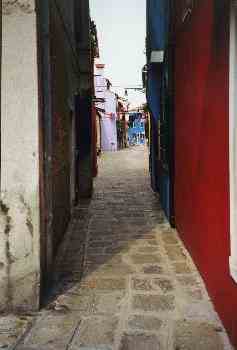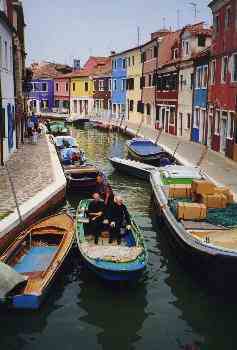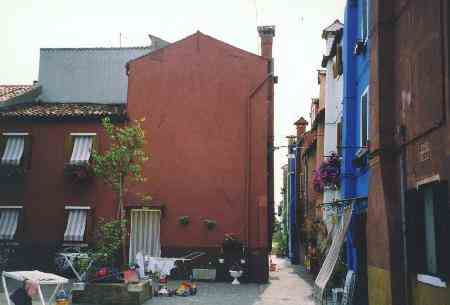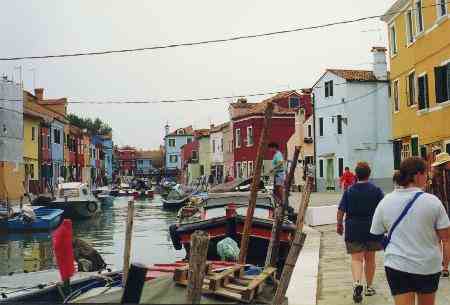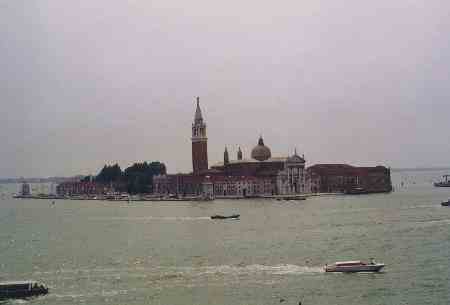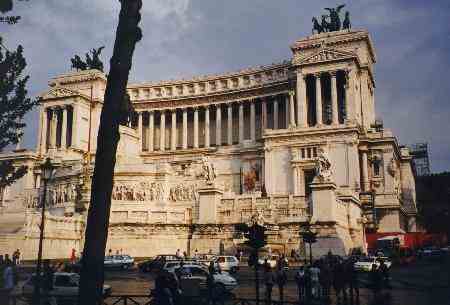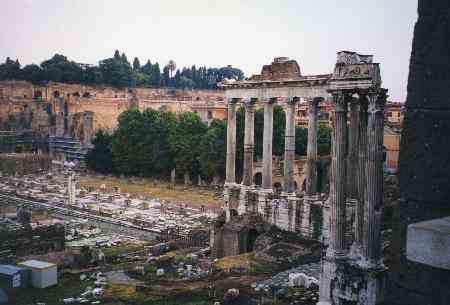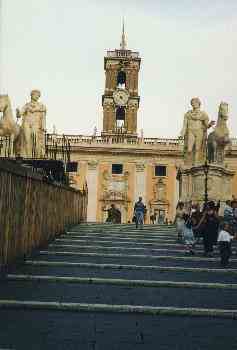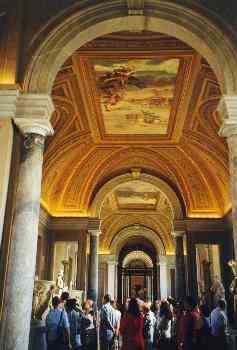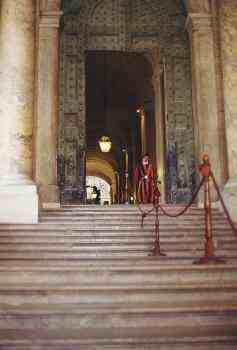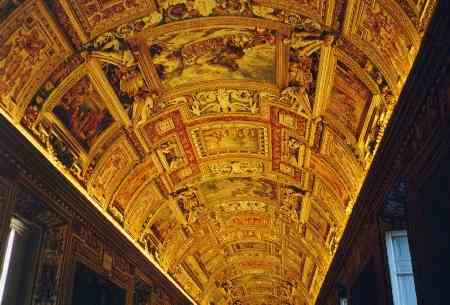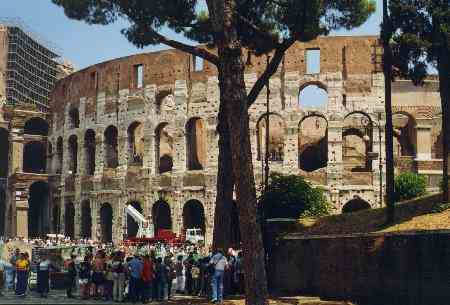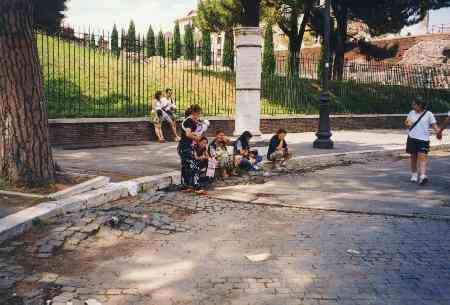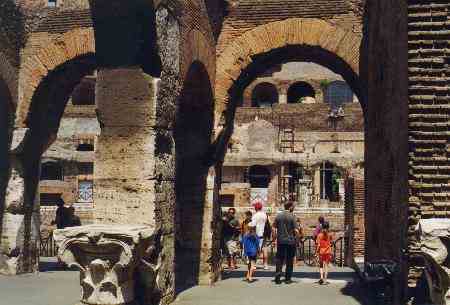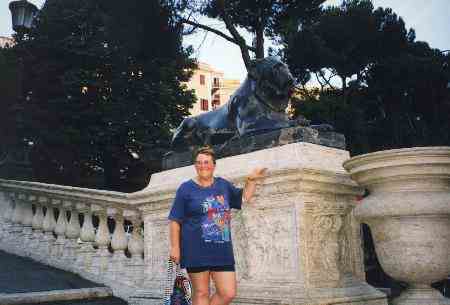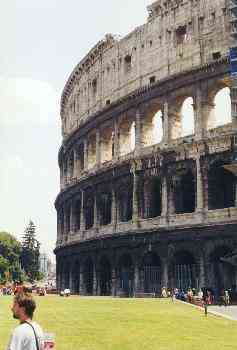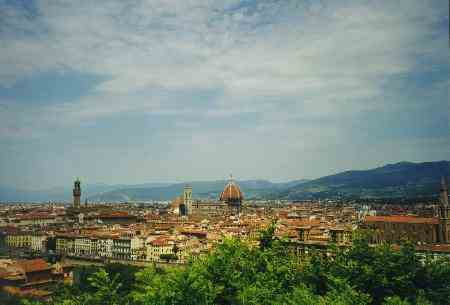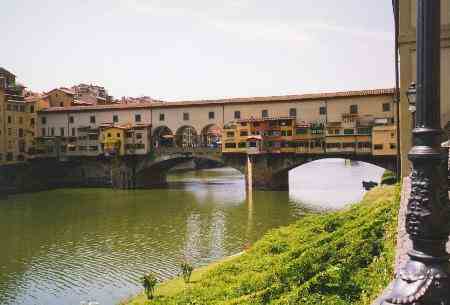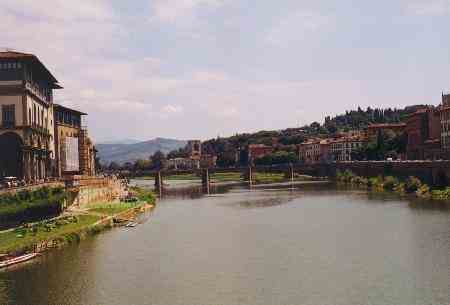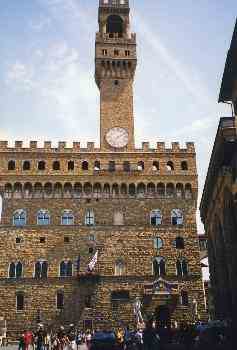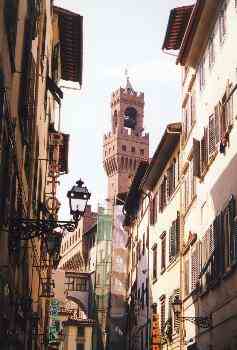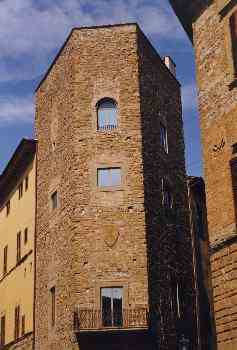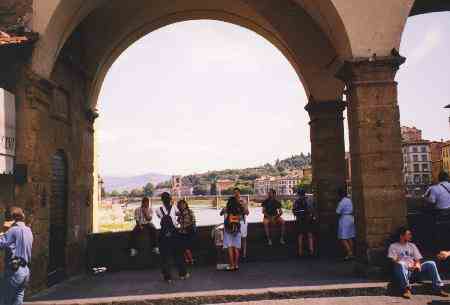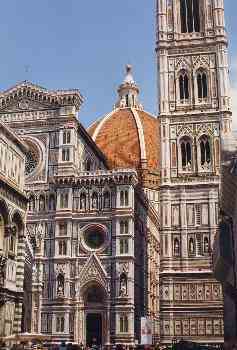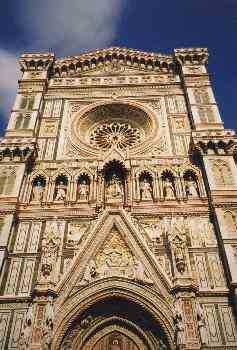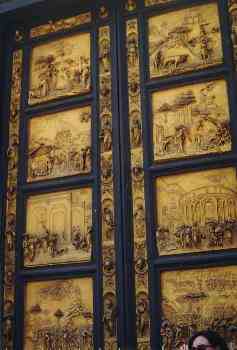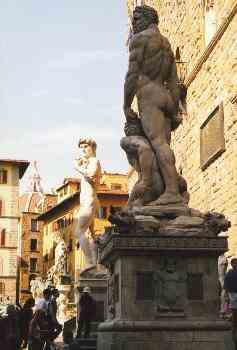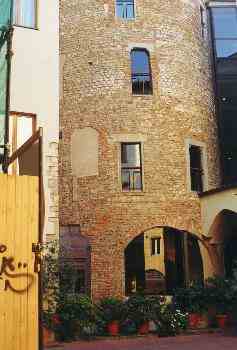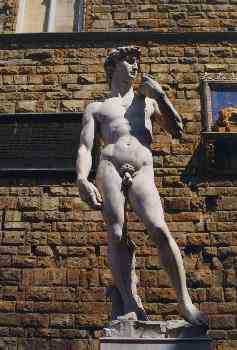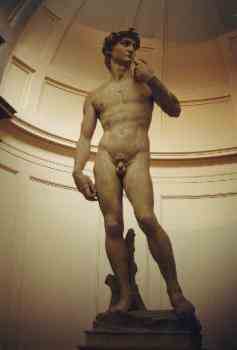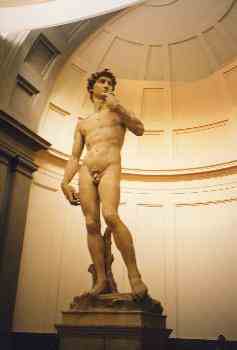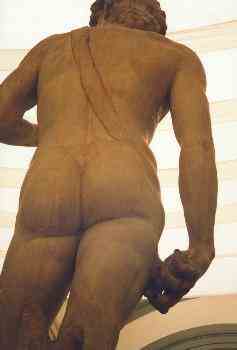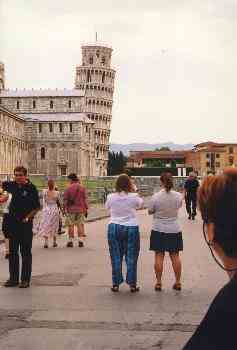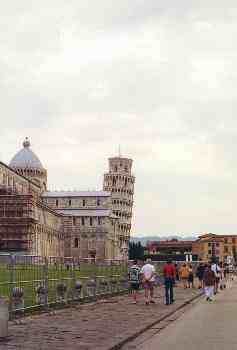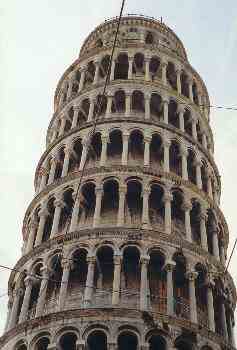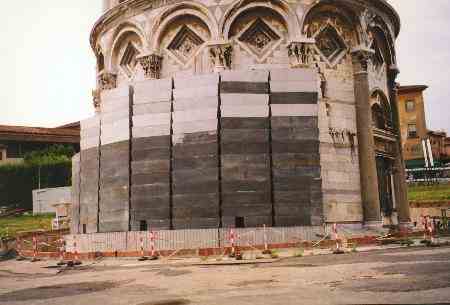In June-July-August-September-October 1999 we went on our first around the world trip.
(99-days - Melbourne - Bangkok - Frankfurt - Moscow - St. Petersburg - Stockholm - Helsinki - Copenhagen - Malaga - London -
Western Europe - UK - Egypt - Jordan - Israel - Greece - New York - Las Vegas - Melbourne).
We left Vienna via Villach in Austria and crossed into Italy.
We travelled through valleys in The Dolomites along straight roads with large bridges and tunnels through the mountains to Venice.
Venice
|
|
A glimpse of the main island of Venice. Venice earns 75% of its income from tourism. |
|
The Doges' Palace in Venice.
|
|
||||||
|
|
A closer view of the Doges' Palace in Venice. |
||||||
|
Decorative lights outside the Doges' Palace. |
|
|
|
|
The Rialto Bridge in Venice. It was here that deals were done in "The Merchant of Venice".
|
|
|
A closer view of the Rialto Bridge. Note the trader waving from the bridge.
|
|
|
|
|
On the Rialto Bridge.
|
|
|
|
A rest in St. Marks Square in Venice. |
|
The Bridge of Sighs over which prisoners walked from the prison on the right to their execution at the Doges' Palace.
|
|
||||||
|
|
Some well weathered buildings beside a Venetian canal. |
||||||
|
An Islamic style building in Venice. |
|
|
|
|
The Grand Canal in Venice.
|
|
|
Venetian gondolas outside the Doges' Palace.
|
|
|
|
|
On a gondola ride in Venice. We had a 45-minute ride around a number of canals.
|
|
|
|
|
A narrow Venetian canal.
|
|
||||||
|
|
Another narrow Venetian canal.
|
||||||
|
More well-weathered buildings beside a Venetian canal. |
|
|
|
|
St. Marks Square in Venice.
|
|
|
A venetian clock.
|
|
||
|
A narrow Venetian alleyway. |
|
||
|
|
A closer view of the Bridge of Sighs.
|
||
|
|
A narrow alleyway on the Venetian island of Burano. This island is famous for its lace work. We had a great fish meal for lunch. |
|
A canal on Burano. Buildings painted in the same colour originally all belonged to members of the one family.
|
|
||||||
|
|
A Burano scene.
|
||||||
|
A canal on Burano. |
|
|
|
|
Burano shops.
|
|
|
|
A Venetian island.
|
|
Rome
|
|
The Piazza Venezia in Rome. It was built in 1911 and is a monument to Vittorio Emannele II, the first king of unified Italy. There was a ceremonially guarded tomb to an unknown soldier in front of it. |
|
Roman ruins.
|
|
||||||
|
|
Roman steps that were designed by Michelangelo but built after his death. |
||||||
|
Inside one of the Vatican museums. |
|
|
|
|
A Swiss guard at the Vatican.
|
|
|
The decorative ceiling inside the Vatican.
|
|
|
|
|
The Roman Colosseum was started by emperor Vespasian in 72 AD. It could seat 50,000. Historians disagree on whether many early Christian martyrs were fed to lions in the stadium.
|
|
|
|
Gypsies outside the Colosseum. We saw them distract an elderly tourist with a piece of cardboard and try to open his bum bag. |
|
A closer view of the Colosseum walls and interior.
|
|
||||||
|
|
A Roman lion. |
||||||
|
|
The massive structure where bloody gladiator combat and wild beast shows took place, when thousands of wild animals were slashed to death, give some insights into Roman people of the day.
|
|
Florence
|
|
The view overlooking Florence from Piazzle Michelangelo (Little Michelangelo Square). |
|
The Ponte Vecchio in Florence. The famous 14th century bridge is lined with gold and silversmith shops. Originally, the shops housed butchers. A corridor along the 1st floor was built by the Medici to link the Pitti Palace and the Uffizi Gallery.
|
|
||||||
|
|
The Arno river in Florence. |
||||||
|
Built by Arnolfo di Cambio between 1299 and 1314, the Palazzo Vecchio was and remains the seat of Florentine government. In the 16th century it became the palace of the Medici before they moved to the Pitti Palace. |
|
|
|
|
Looking through a narrow Florentine street to the Palazzo Vecchio.
|
|
|
A number of the early buildings in Florence were towers.
|
|
|
|
|
Looking through part of the Uffizi Gallery to the Arno river.
|
|
|
|
The Duomo cathedral in Florence. It is plain inside but has a beautiful pink, white and green marble façade. It was started in 1296 by the Sienese architect Arnolfo di Cambio and took almost 2 centuries to complete. |
|
Another view of the Duomo cathedral and the 82 metre high campanile (bell-tower) next to it.
|
|
||||||
|
|
The top of the campanile next to the Duomo cathedral. |
||||||
|
The "Gates to Paradise", gilded bronze doors of the baptistry next to the Duomo cathedral. Designed by Lorenzo Ghiberti the panels depict stories from the bible. Michelangelo described them as the most beautiful creation that he had seen.
|
|
|
|
|
Statues in the Plazza della Signoria outside the Palazzo Vecchio.
|
|
|
|
Another former tower in Florence. This has been expensively renovated as a hotel.
|
|
|
|
A copy of the statue of David in the Plazza della Signoria outside the Palazzo Vecchio. |
|
The original statue of David by Michelangelo in the Accademia in Florence. It was sculptured between 1501 and 1504.
|
|
||||||
|
|
David by Michelangelo. It is the largest marble statue carved in Italy since the end of the Roman Empire. |
||||||
|
A rear view of David.
|
|
|
|
|
More works in the Accademia in Florence.
|
|
Pisa
|
|
The leaning tower of Pisa. Building was started in 1174, reputedly by Bonanno Pisano, but the foundations were unsound and the 57 metre tower had already begun to lean by the time of its completion in the 14th century. |
|
It is the bell tower (or campanile) of the Pisa basilica. Its tilt at the top is more than 5 metres from the vertical.
|
|
||||||
|
|
In this view you can see the cables which are one of the means that have been used to stabilise the tower. |
||||||
|
The other end of the cables used to stabilise the tower. |
|
|
|
|
These lead ingots weighing 600 tonnes were installed in 1994 and anchor the north foundation. The lean was stopped and even began to straighten.
|
|
After Pisa we travelled past Cararra where the famous marble is mined.
Then past Genoa along the coast to Monaco for a look around and on to Nice in France.
